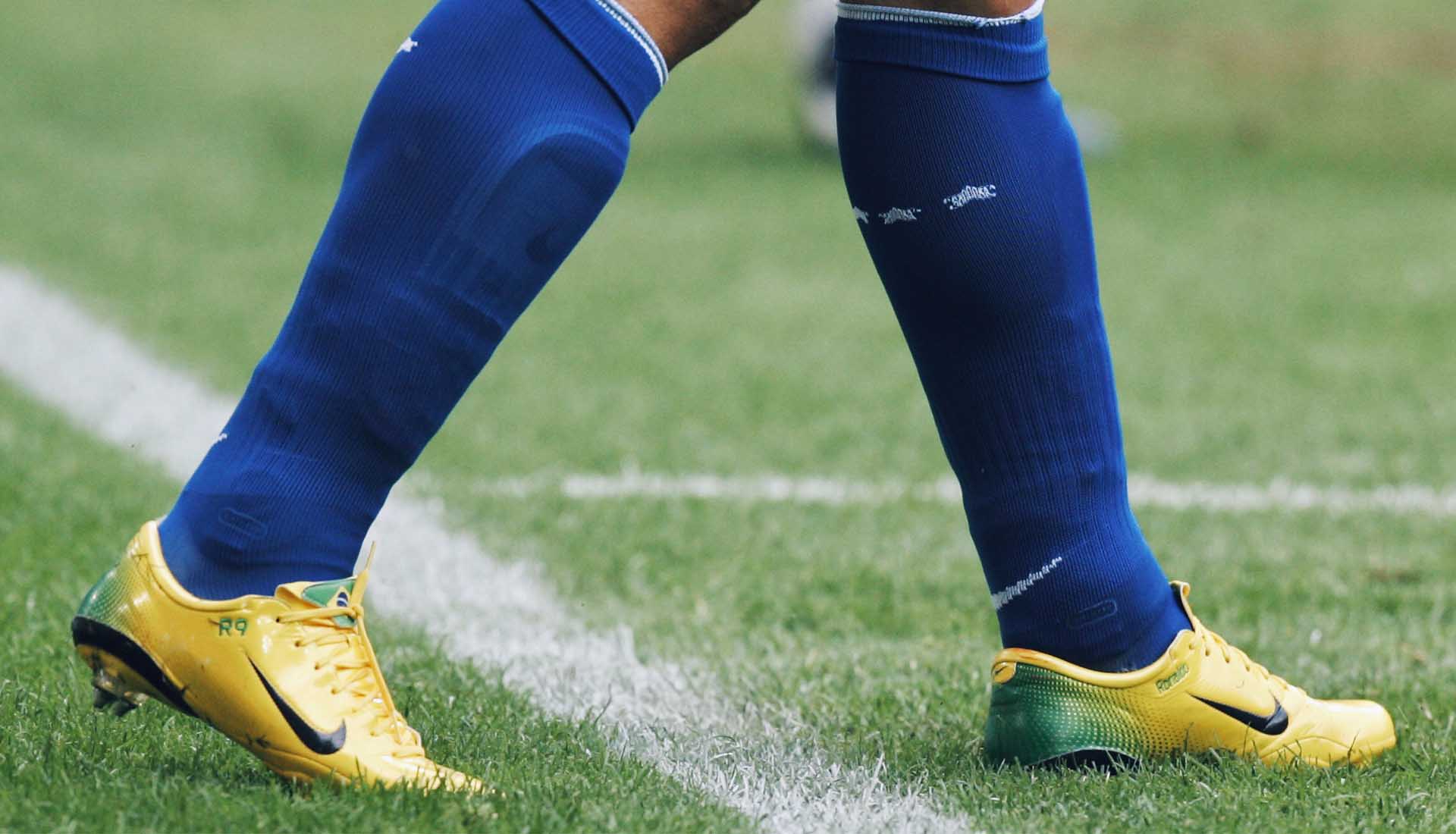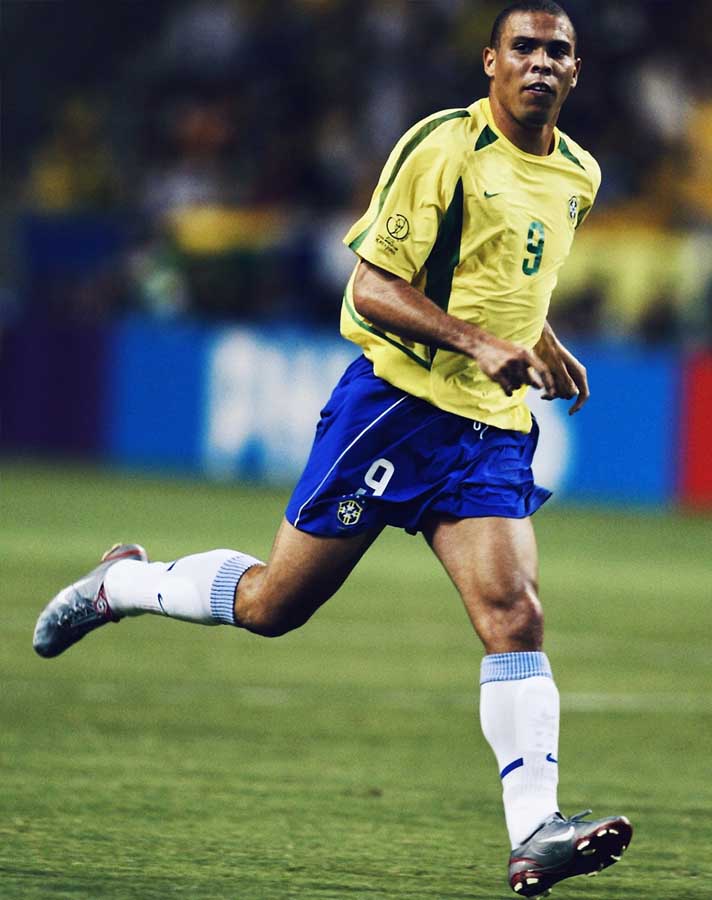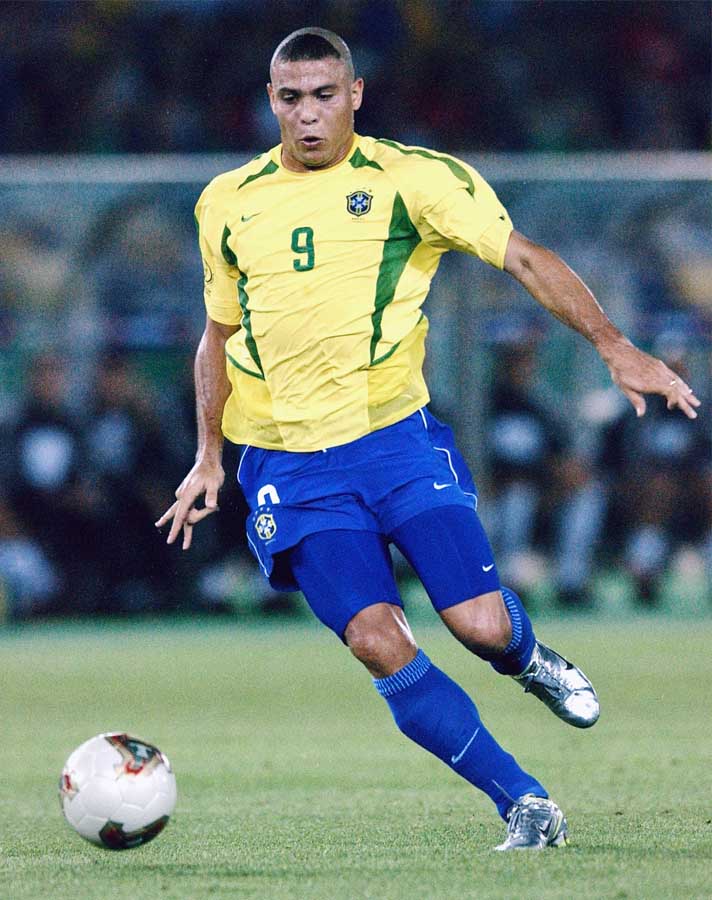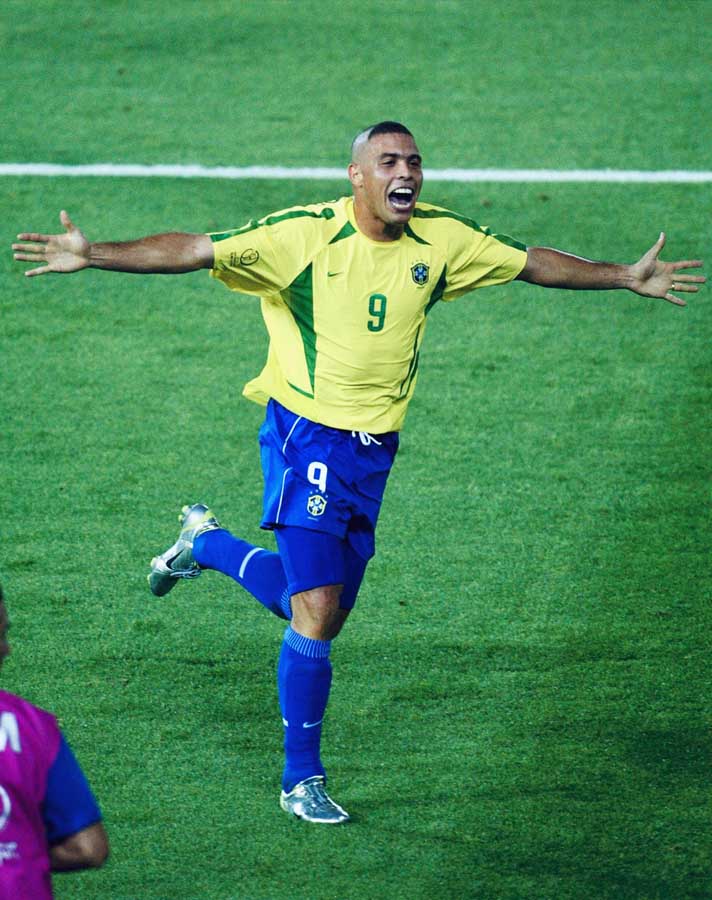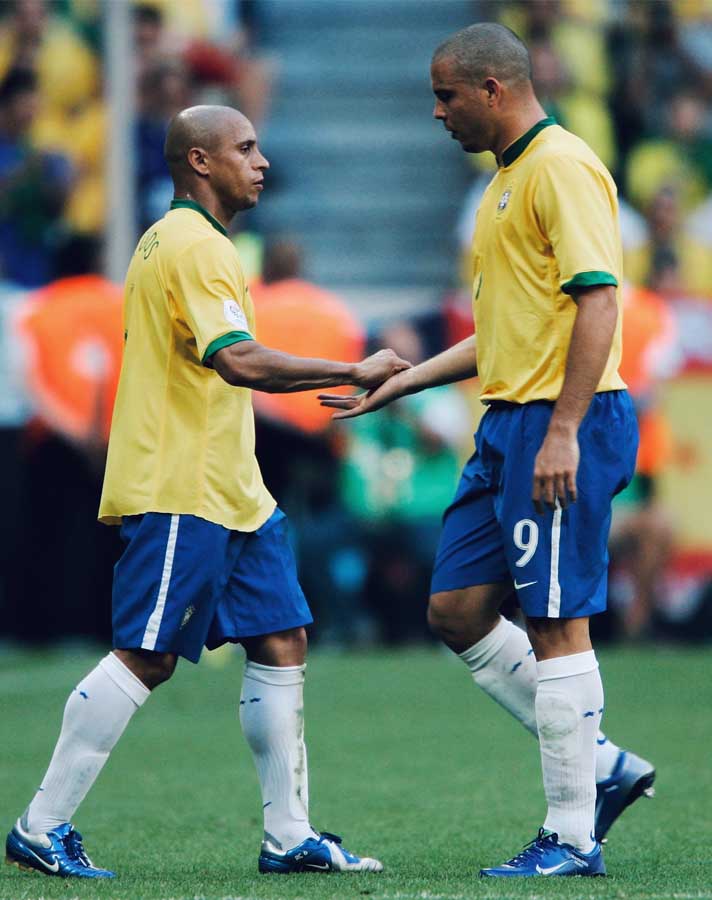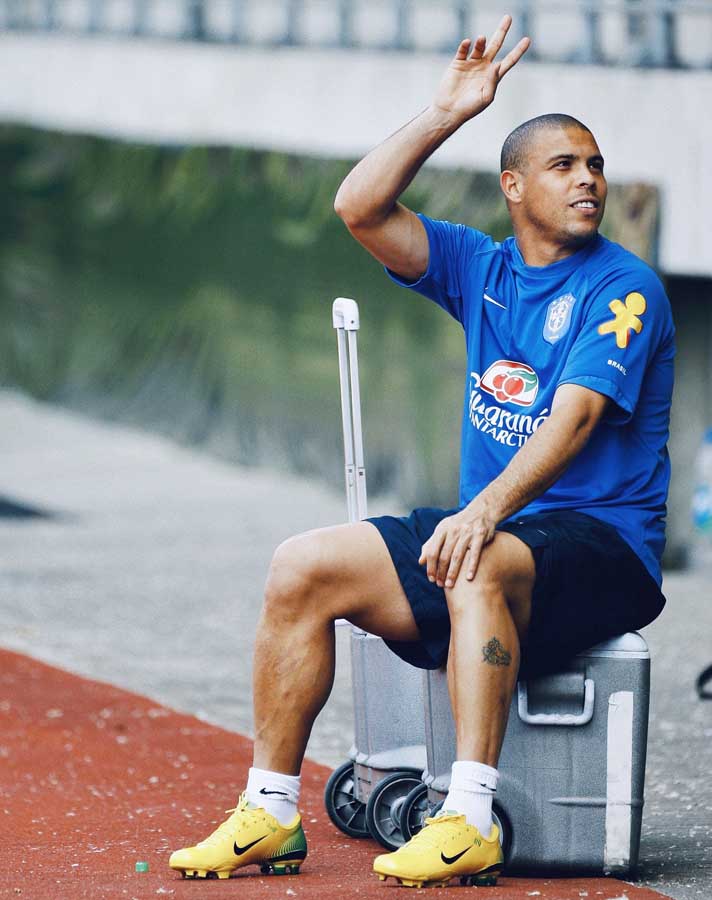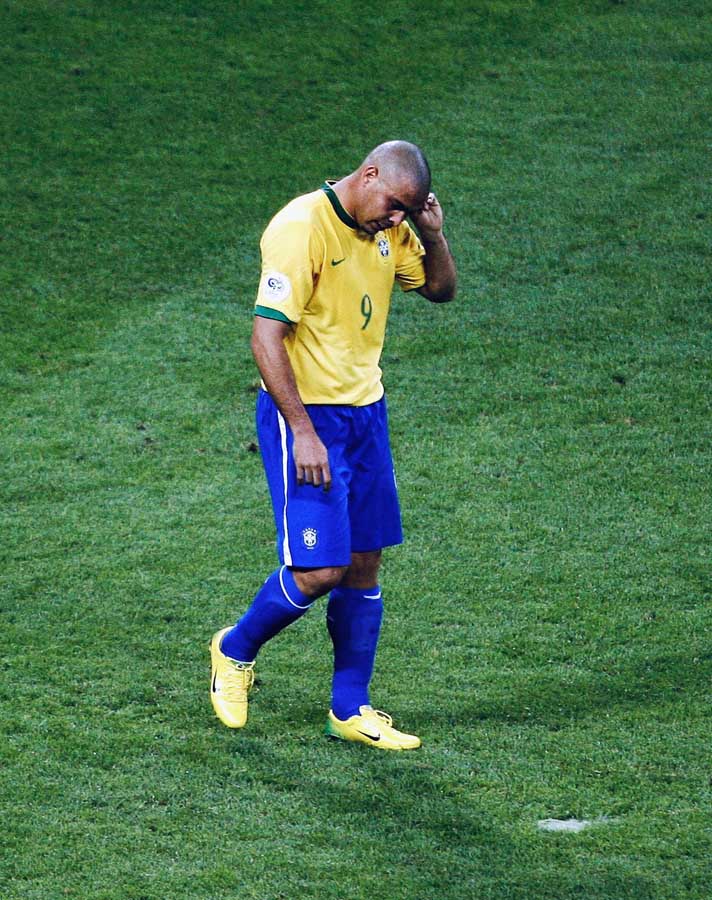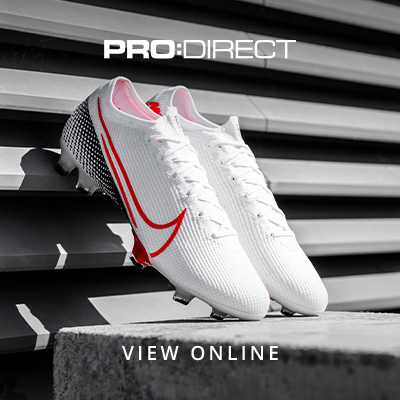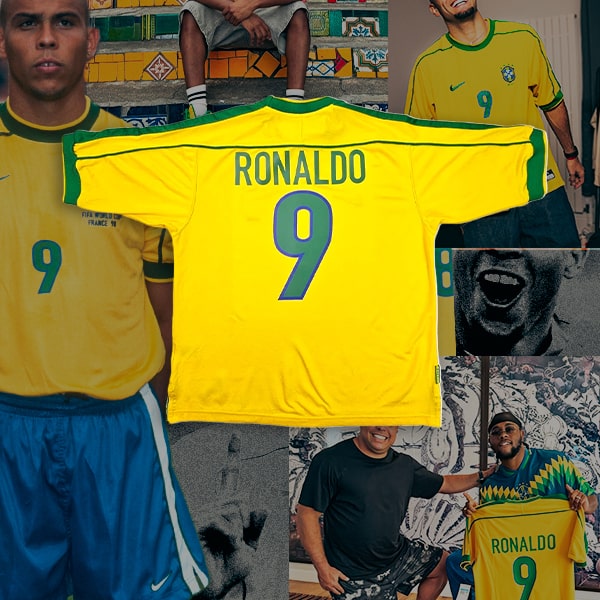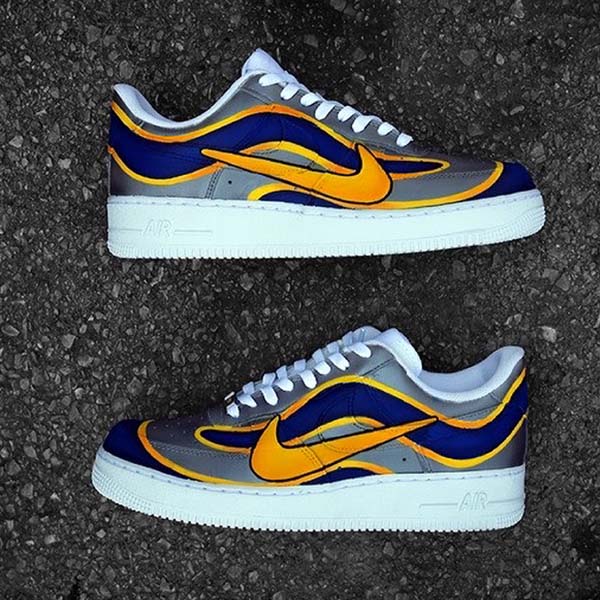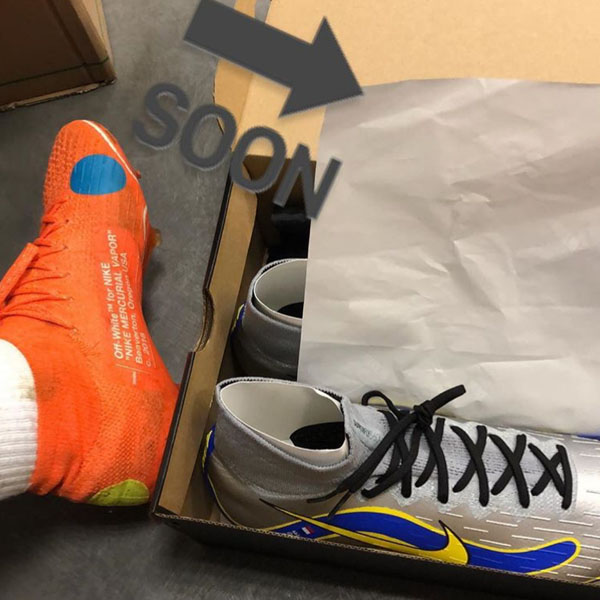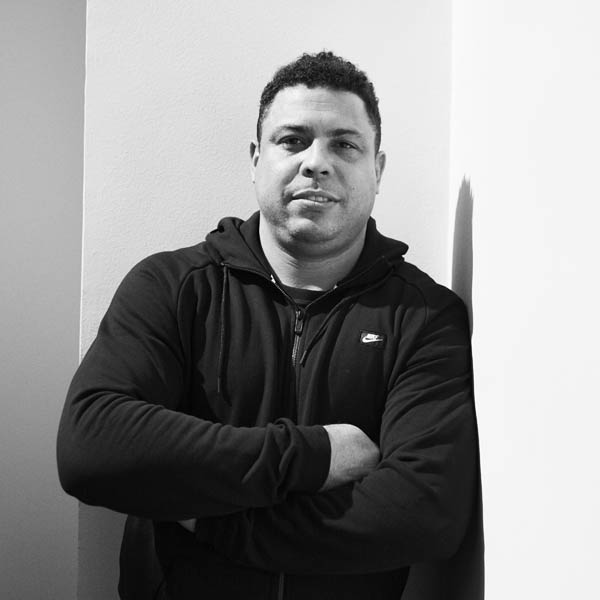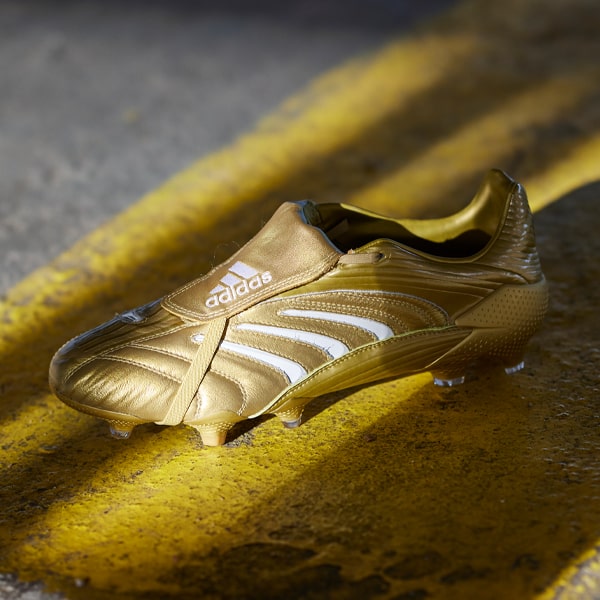Goal machine. World Cup winner. Legend. El Fenomeno. As important as Ronaldo’s staggering goal rate was to his legacy, so too were his stunning array of boots, mapping out his career like markers on an epic journey, developing and evolving in a symbiotic relationship alongside one another. And never were those markers more apparent than at the three World Cups that the Brazilian competed at.
The Brazilian’s devastating legacy will always be intrinsically linked to his participation in three World Cups – 1998, 2002, and 2006. His goal-scoring record in the tournament can barely be matched, standing second only to Miroslav Klose – and the German had one extra tournament to complete his tally.
In 1996, Nike ramped up their moves into the game, partnering with world champions Brazil and positioning the Selecao’s young hotshot striker, Ronaldo, as the focal point of their aim to create a boot worthy of the side’s caliber of play. Patient on the pitch, the young man would wait for the right moment to strike. And when that moment came, he was ruthlessly efficient, accelerating with an unmatched velocity with the goal in his sights, changing in his nature from passive to aggressive. A switch that was, in its very definition, Mercurial. And so the concept was born, and 1998 welcomed a new era of boot design, one that has only been outlasted in Nike’s repertoire by the timeless Tiempo.
Initially known as Tiempo Ultra Light and the Ronaldo Ultra Speed, the first Nike Mercurial R9 was engineered with the 21-year old Ronaldo’s startling speed in mind. A truly revolutionary concept and deadly on the feet of the Brazilian, it introduced the idea of synthetic uppers, with KNG-100, which behaved like leather but didn't absorb water the way natural fabrics did. It was thinner and lighter than traditional leather — shattering the stigma of synthetics and changing how football footwear was made going forward. And it was wrapped up in that instantly recognisable and iconic wavy silver, blue, and yellow paint job. The moment when Ronaldo scored the first goal in them on 16 June, 1998 – a brilliant half-volley – will forever be etched into Nike’s history books. Four goals and three assists later, and the legacy had truly begun.
While everyone knows that the 1998 World Cup didn’t work out as Ronaldo and Brazil would have liked, what it did do was reaffirm the belief that Nike had in him as a leading man, worthy of his own signature line. Flash forward four years and the Swoosh positioned him accordingly heading into the 2002 World Cup in Japan and South Korea, arming him with a new weapon with which to conquer the world: the Mercurial Vapor.
The initial idea of the Mercurial line was to build a track spike for the pitch, and by the Mercurial Vapor – the third iteration – that had shifted to create something that could sustain a 90-minute sprint and deliver the perfect foot-to-ground feel for fast players. This was the beginning of the philosophy that lightweight equalled speed for Nike. As a result, in order to remove excess weight, everything from glue to stitching thread was weighed, and a new innovative fit that reduced weight and added comfort was created.
For the 2002 World Cup, Ronaldo began the tournament wearing the “Silver/Chilli Red” colourway, scoring 5 goals. He then switched into his exclusive R9 “Chrome/Silver” colourway – along with that bizarre yet iconic haircut – for Brazil’s semi-final against Turkey. A goal in that game was followed by a brace in the final against Germany as his inspiring performance led Brazil to their fifth World Cup victory. Those two goals brought his total to a staggering eight goals in the tournament, banishing the demons of four years ago and kickstarting the Vapor line.
Flash forward a further four years, and there was a new Ronaldo in town, although the OG was not ready to pass on the mantle on to the Portuguese pretender just yet. For the 2006 World Cup, the Brazilian was equipped with the third generation of the Vapor line, which boasted a Teijin microfiber upper that was engineered to conform and adjust to the foot’s shape. Combined with a carbon fibre heel wrap and a two-piece plate for multidirectional speed, it was dressed out in the “Blue/White” colourway that tied in so perfectly with the Selecao’s away kit for the opening two group fixtures in Germany. However, Ronaldo failed to hit the back of the net in them, and so it was time for a switch up.
Ronaldo moved into his limited-edition “Yellow/Green” Mercurial Vapor III R9 for Brazil’s final group stage game against Japan, scoring twice in that match and once more against Ghana on the way to the quarter finals before Brazil were eventually eliminated by France in the semis. But by that time the record had already been set; Ronaldo was the all-time World Cup record goal scorer with 15 goals in 19 matches, and with that record, the Mercurial was established as the flagship in Nike's roster.
Cristiano may have eventually taken on the mantle of the Mercurial, running with it for an unprecedented time as it continued to evolve throughout the years, developing way beyond what would have been imagined two decades ago, but it was El Fenomeno that was responsible for its creation; for forging its lasting legacy in World Cup goals.
